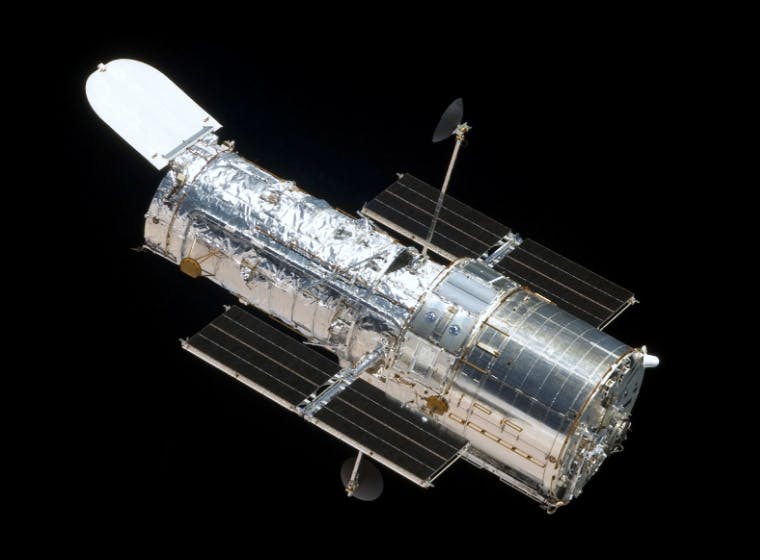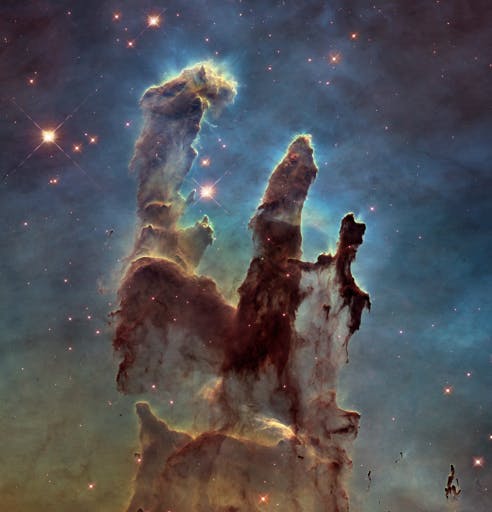TL;DR Science - The Hubble Space Telescope
By Srishti S.
December 16, 2022 · 2 minute read
Physics
Earth Science
Space Science
Intellectuals across the globe have discovered countless aspects of the cosmos over the past few centuries, but there is one device that has completely redefined the way we view outer space: the Hubble Space Telescope (HST). Let’s take a closer look at how this instrument has changed our perception of the universe.

History
The initial concept of a space telescope can be traced back to the early 1900s, with numerous scientists such as Hermann Oberth, Robert Goddard, Konstantin Tsiolkovsky, and Lyman Spitzer contributing their ideas about its possible potential.
One such person who was instrumental in the development of the Hubble Space Telescope was Dr. Nancy Grace Roman, commonly known as the “Mother of Hubble.” She promoted the idea of the HST like no other through her lectures and eventually became the program scientist, advocating tirelessly to continue funding the project.
The telescope was named after astronomer Edward Hubble, who realized that the Milky Way wasn’t the only galaxy out there; what scientists thought were nebulae were actually full-fledged galaxies! He eventually discovered that the universe is continuously expanding, serving as the basis for the Big Bang Theory.
Construction of the now NASA-funded telescope began in the 1970s, and it was due to be launched in 1983; however, the project faced numerous difficulties including technical issues and the 1986 Challenger disaster. This major setback halted the progression of the project but also gave time for scientists to run more testing and fix minor problems with the overall structure. The Hubble was finally launched into low-Earth orbit on April 24, 1990.
Discoveries
Now, the Hubble Space Telescope has made over 1.3 million scientific observations, all of which hold great value. However, some of the most important discoveries made possible by this instrument are listed below.

- Edward Hubble realized the universe is expanding, and the Hubble helped figure out the rate at which it is expanding!
- The telescope helped us discover that at the center of almost every major galaxy is a black hole.
- We wouldn’t have found two moons of Pluto, Nix and Hydra, without the HST.
- Not one, not two, but three generations of stars were discovered inside the NGC 2808 globular cluster; the HST was able to observe their colors and brightness.
- The Hubble found water vapor erupting from one of Jupiter’s moons, Ganymede. It turns out that it has an ocean!
- The age of the universe according to the Hubble is 13.8 billion years.
- The HST took the first visual pictures of exoplanets.
- The telescope found a supposed 10th planet in our solar system, Eris. It was later classified as a dwarf planet along with Pluto.
- The Hubble was the first telescope to ever capture the collapse of an asteroid.
And so much more!
TL;DR
We have been discovering more and more about our incredibly vast universe since Galileo’s observations with the first telescope. As our scientific prowess has advanced, so has our understanding of the world around us. One invention that has contributed immensely to our knowledge of the cosmos is the Hubble Space Telescope; despite facing numerous challenges in its initial stages, the instrument has enabled us to look far beyond our own solar system.
Here is a great video about the Hubble Space Telescope if you want to learn more!
Sources:
https://www.nasa.gov/content/goddard/hubble-history-timeline
https://en.wikipedia.org/wiki/Hubble_Space_Telescope#Conception,_design_and_aim
https://solarsystem.nasa.gov/people/225/nancy-roman-1925-2018/
https://www.rmg.co.uk/stories/topics/what-has-hubble-space-telescope-discovered
https://www.sciencefocus.com/space/hubble-space-telescope-generations-of-stars/
Image Sources:
https://upload.wikimedia.org/wikipedia/commons/3/3f/HST-SM4.jpeg
Did you enjoy this article?
About The Author
Srishti Swaminathan is a high school sophomore interested in STEM and writing. She enjoys reading, listening to music, and watching movies. If you have any comments or questions regarding this article, feel free to contact her at srishti@sciteens.org.